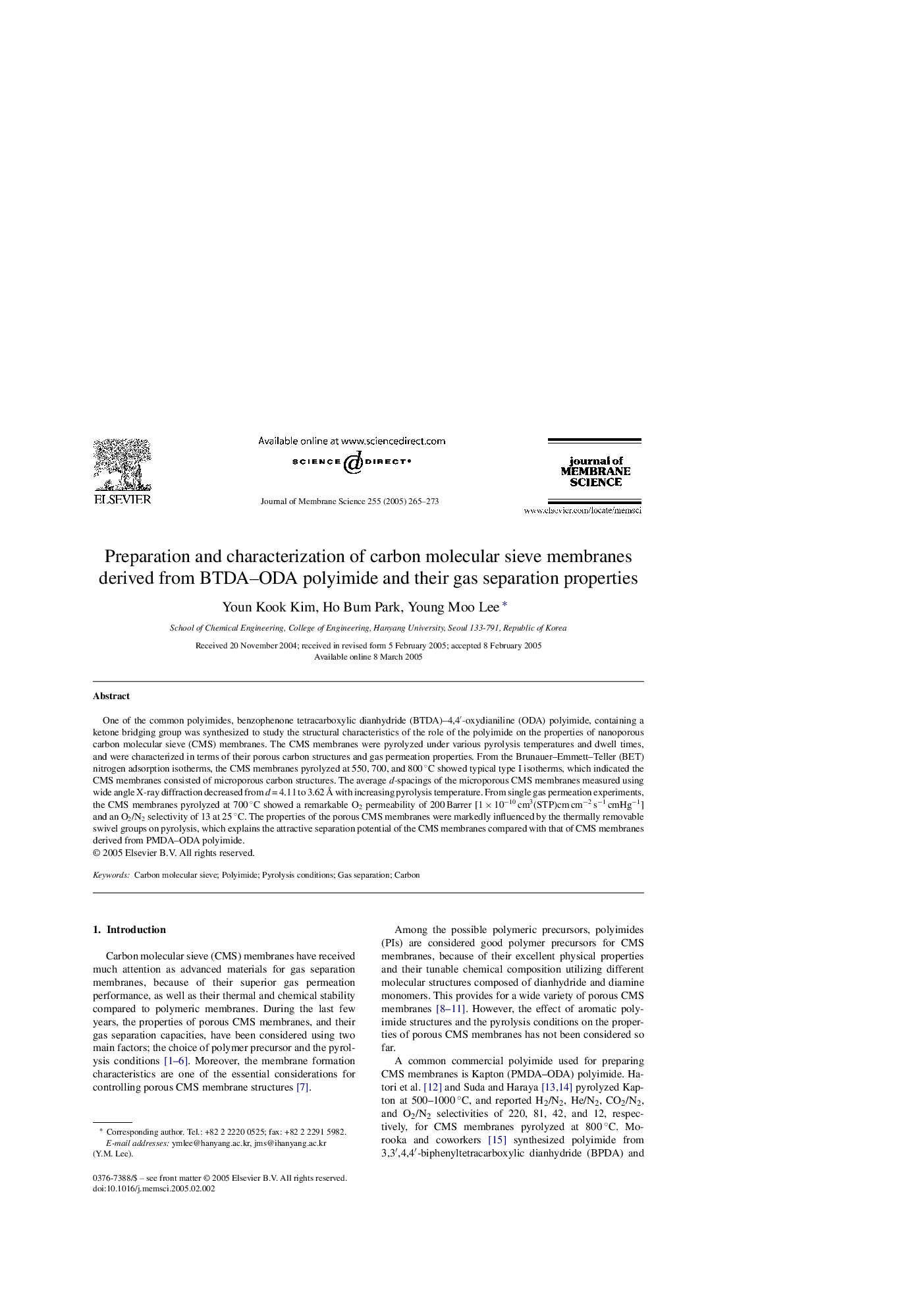| Article ID | Journal | Published Year | Pages | File Type |
|---|---|---|---|---|
| 9684853 | Journal of Membrane Science | 2005 | 9 Pages |
Abstract
One of the common polyimides, benzophenone tetracarboxylic dianhydride (BTDA)-4,4â²-oxydianiline (ODA) polyimide, containing a ketone bridging group was synthesized to study the structural characteristics of the role of the polyimide on the properties of nanoporous carbon molecular sieve (CMS) membranes. The CMS membranes were pyrolyzed under various pyrolysis temperatures and dwell times, and were characterized in terms of their porous carbon structures and gas permeation properties. From the Brunauer-Emmett-Teller (BET) nitrogen adsorption isotherms, the CMS membranes pyrolyzed at 550, 700, and 800 °C showed typical type I isotherms, which indicated the CMS membranes consisted of microporous carbon structures. The average d-spacings of the microporous CMS membranes measured using wide angle X-ray diffraction decreased from d = 4.11 to 3.62 Ã
with increasing pyrolysis temperature. From single gas permeation experiments, the CMS membranes pyrolyzed at 700 °C showed a remarkable O2 permeability of 200 Barrer [1 Ã 10â10 cm3(STP)cm cmâ2 sâ1 cmHgâ1] and an O2/N2 selectivity of 13 at 25 °C. The properties of the porous CMS membranes were markedly influenced by the thermally removable swivel groups on pyrolysis, which explains the attractive separation potential of the CMS membranes compared with that of CMS membranes derived from PMDA-ODA polyimide.
Related Topics
Physical Sciences and Engineering
Chemical Engineering
Filtration and Separation
Authors
Youn Kook Kim, Ho Bum Park, Young Moo Lee,
